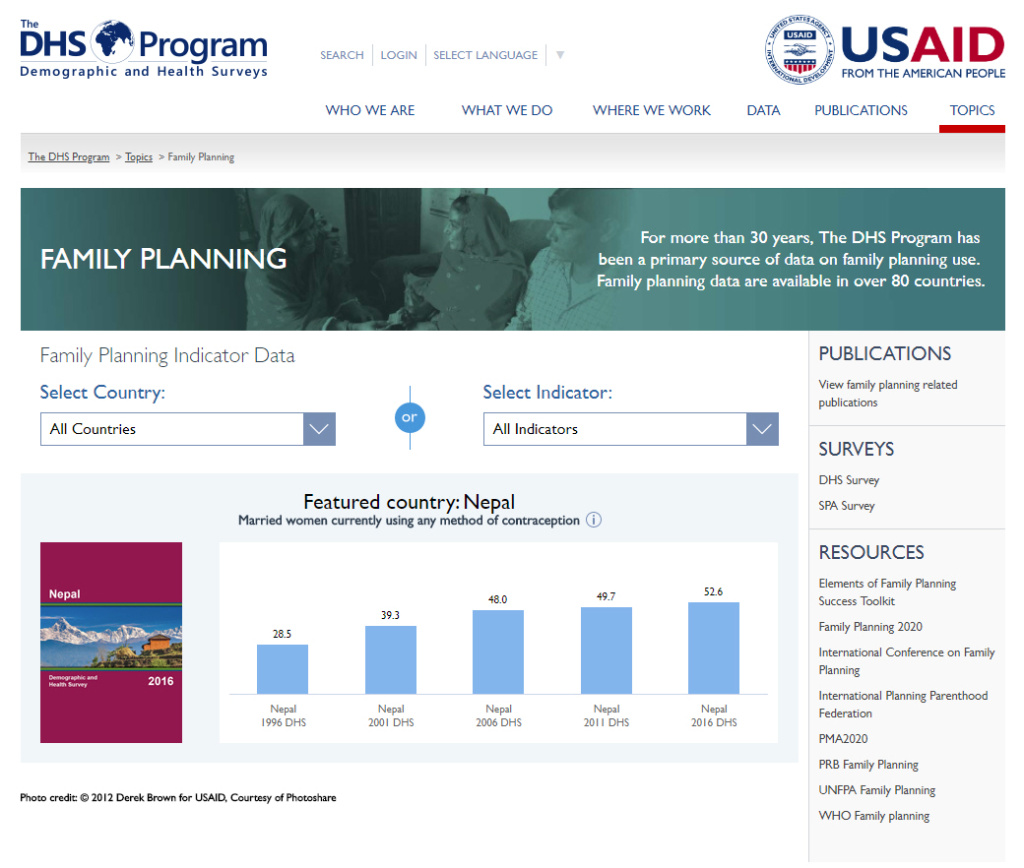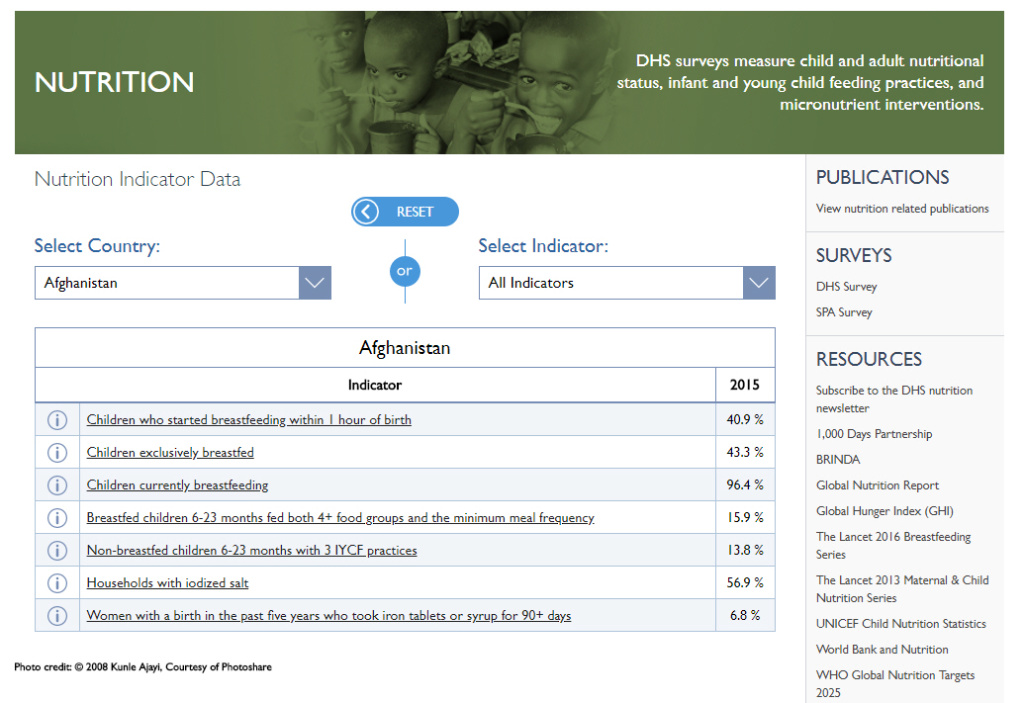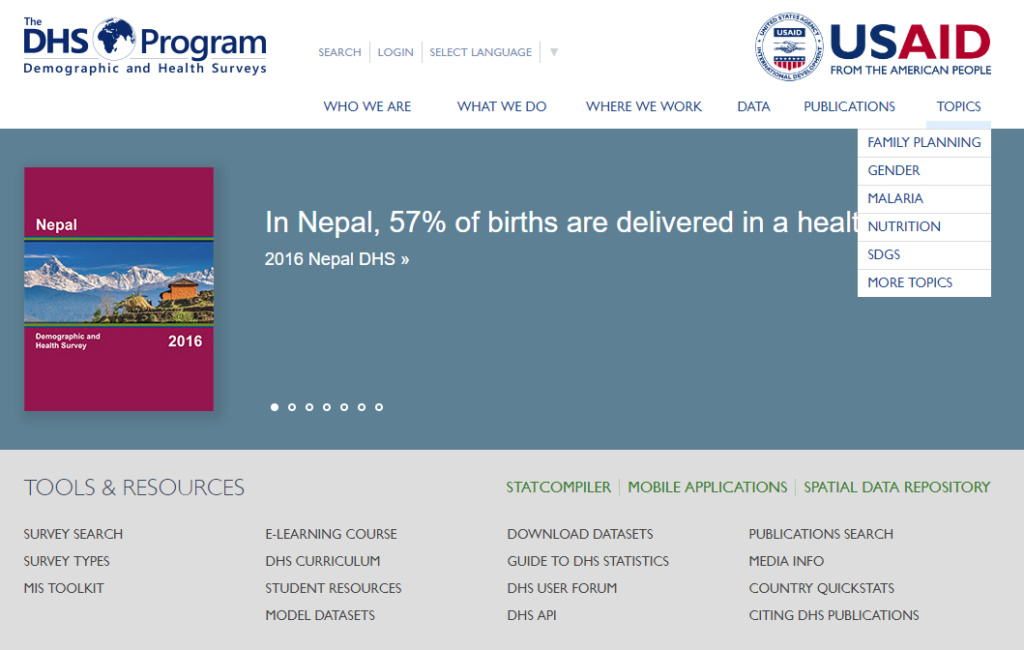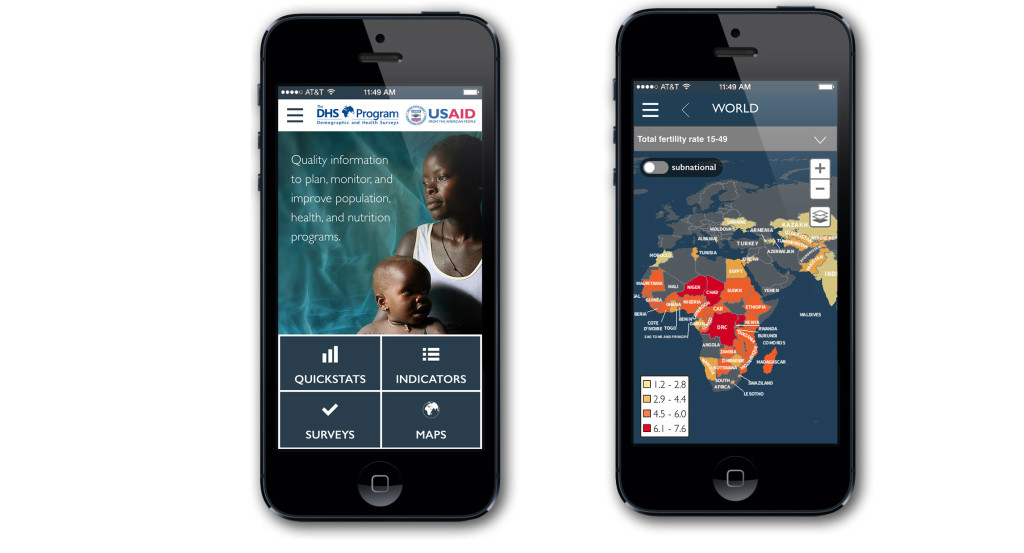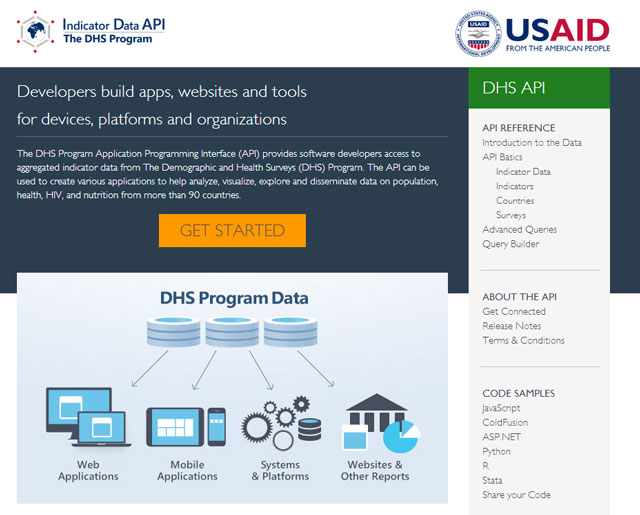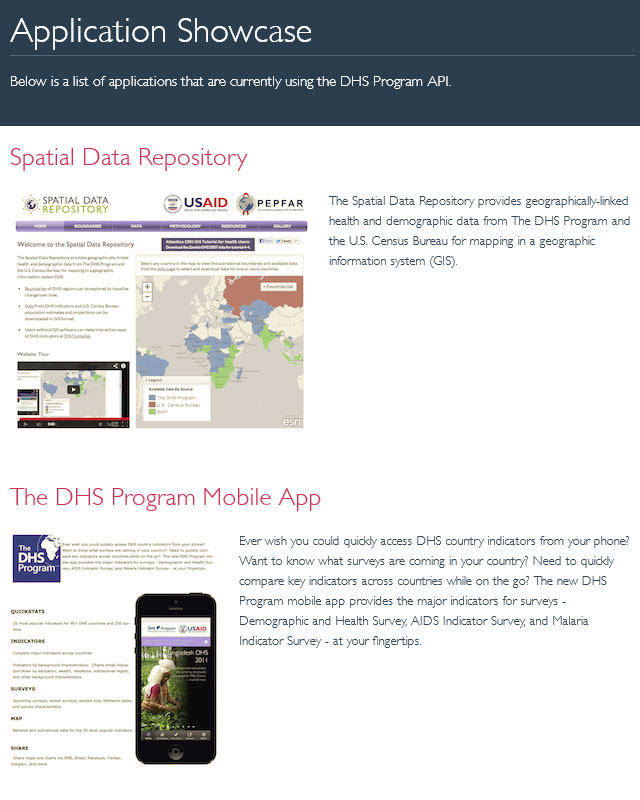You may be familiar with the USAID funded DHS Program Spatial Data Repository (SDR) and use it to access spatial and non-spatial indicator data produced by The DHS Program surveys. However, if you have not visited recently or are new to the tool check it out today!
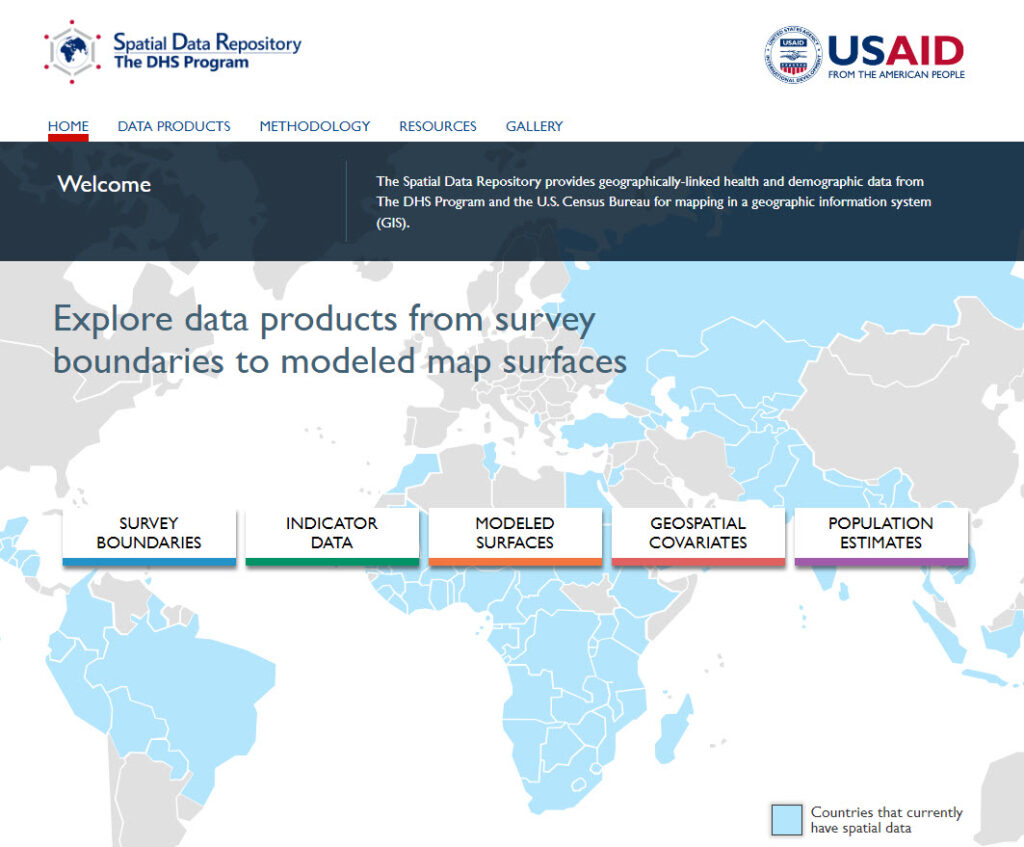
There are brand new features, like a Model Dataset to use for familiarizing yourself with The DHS Program data, lesser known features like Geospatial Covariates and Modeled Surfaces and even some amazing new visualizations under construction that will debut in spring 2024.

The new Model Dataset is useful for learning how to use DHS Program data to produce your own results.
The SDR is a custom application built with JavaScript, HTML, CSS, Python, Node and other tools. It relies on Esri’s ArcGIS Enterprise for serving boundary files, Python tools for creating customized datasets and The DHS Program Indicator Data API for instant access to the vast universe of DHS Program survey data and Amazon Web Services (AWS) for hosting and serverless solutions. Blue Raster is a trusted technology partner to The DHS Program with over 15 years of dedicated service to the USAID funded project.
Keep your eye on this space and visit the Spatial Data Repository today!
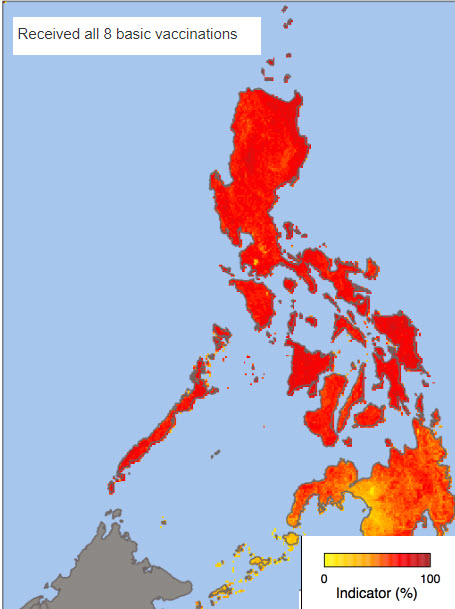
Download Modeled Surfaces produced from DHS Program survey estimates like this one from the Philippines.

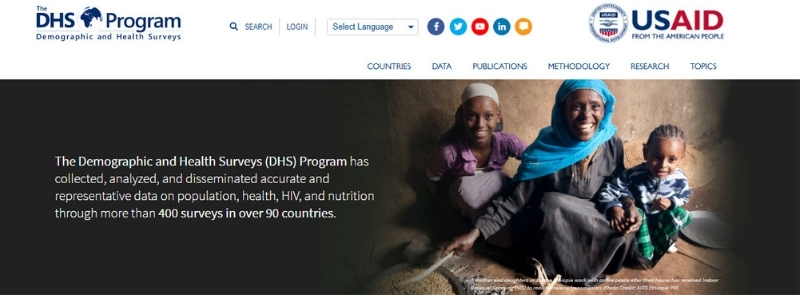
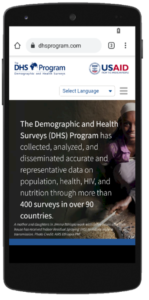
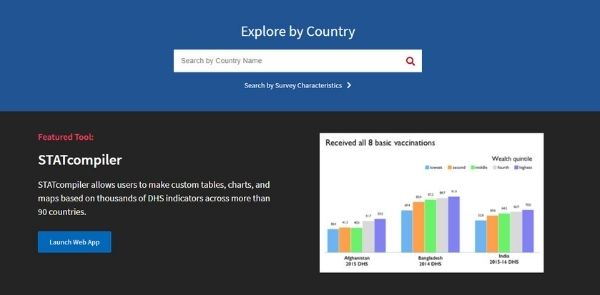
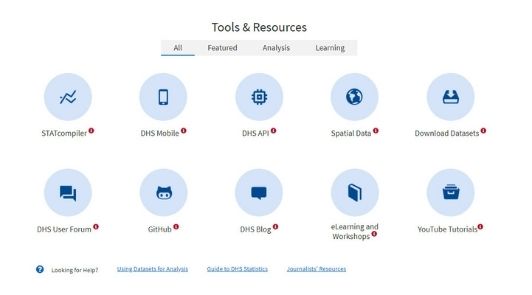
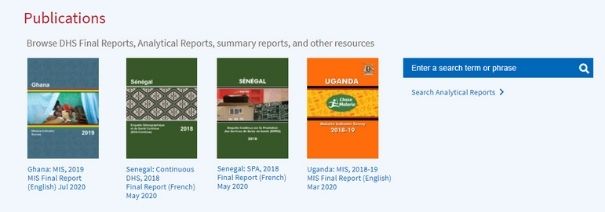
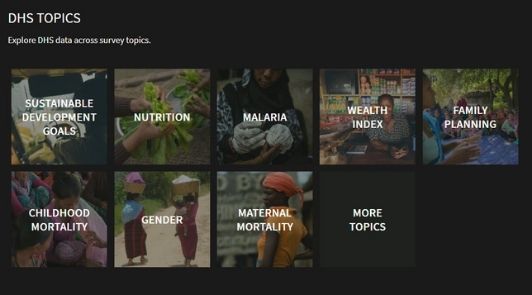

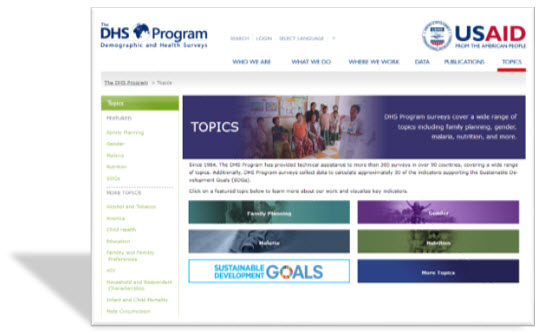 Blue Raster is a long term partner of USAID funded The DHS Program – since 2009 we have collaborated on and created such tools as
Blue Raster is a long term partner of USAID funded The DHS Program – since 2009 we have collaborated on and created such tools as 
